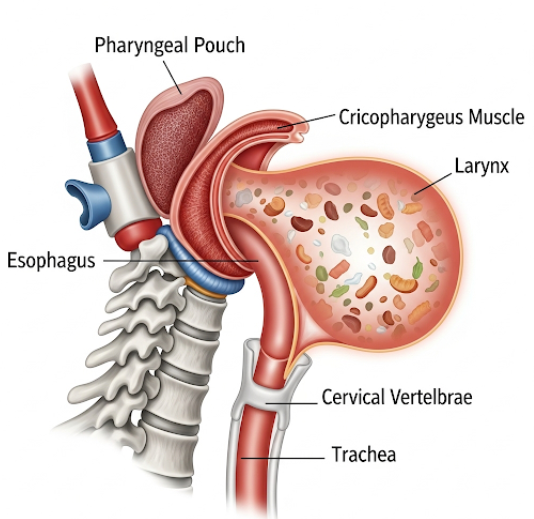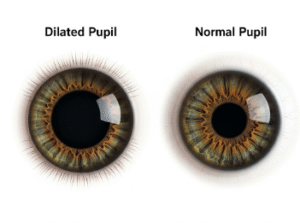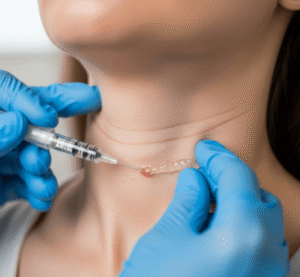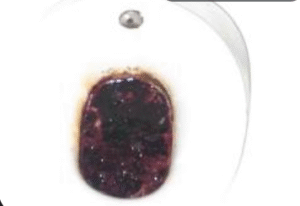Overview
Pharyngeal Pouch, also known as Zenker’s Diverticulum, is a rare condition in which a pouch (or outpouching) forms in the wall of the upper part of the esophagus, just behind the throat. This condition mainly affects older adults and can cause symptoms such as difficulty swallowing, regurgitation of undigested food, chronic coughing, and bad breath. While not life-threatening, it can significantly affect quality of life and requires medical evaluation for appropriate treatment.
What is Pharyngeal Pouch?
A pharyngeal pouch is a sac-like formation that protrudes through a weak spot in the muscular wall of the hypopharynx, just above the upper esophageal sphincter. This weak spot, known as Killian’s dehiscence, allows part of the pharyngeal lining to bulge outward and collect food or saliva.
The condition is most common in individuals over the age of 60 and tends to progress slowly over time. It is classified as a diverticulum and is usually a single pouch, although in rare cases, more than one may develop.
Symptoms
Symptoms of a pharyngeal pouch can vary depending on the size of the pouch and how long it has been present. Common signs include:
- Difficulty swallowing (dysphagia)
- Regurgitation of undigested food hours after eating
- Chronic coughing or choking, especially when lying down
- Sensation of a lump in the throat
- Hoarseness or changes in voice
- Bad breath (halitosis) due to food trapped in the pouch
- Aspiration (food entering the airway), which can lead to pneumonia
- Weight loss in advanced or severe cases
Some patients may remain asymptomatic in the early stages.
Causes
Pharyngeal pouch is believed to result from a combination of anatomical weakness and functional abnormalities:
- Increased pressure during swallowing: If the upper esophageal sphincter (cricopharyngeal muscle) fails to relax properly, pressure builds up and pushes the mucosal layer outward.
- Age-related muscle degeneration: Muscle weakness in the pharyngeal region is more common in older adults.
- Neuromuscular disorders: Conditions affecting swallowing can contribute to abnormal pressure during deglutition.
- Chronic inflammation or GERD (acid reflux): May contribute to esophageal muscle dysfunction.
Risk Factors
Several factors increase the risk of developing a pharyngeal pouch:
- Age over 60
- Male gender (slightly more common in men)
- History of chronic swallowing difficulties
- Neurological conditions (e.g., Parkinson’s disease, stroke)
- History of GERD or upper digestive tract disorders
- Weak pharyngeal muscle tone due to aging or disease
Complications
If left untreated, a pharyngeal pouch can lead to several complications:
- Aspiration pneumonia from inhaled food particles
- Malnutrition or weight loss due to difficulty eating
- Recurrent respiratory infections
- Formation of ulcers or inflammation within the pouch
- Rarely, carcinoma (cancer) may develop in the pouch lining
- Psychosocial issues from embarrassment or fear of choking in public
Timely treatment can prevent most of these complications and restore normal swallowing.
Prevention
There is no guaranteed way to prevent a pharyngeal pouch, but some measures may reduce the risk or delay progression:
- Maintain good swallowing hygiene (eat slowly, chew thoroughly)
- Treat underlying swallowing disorders or GERD early
- Avoid excessive throat strain or swallowing hard food
- Seek early medical evaluation if chronic dysphagia or coughing occurs
- Stay hydrated and maintain good oral health to prevent bacterial buildup
Treatment Options in Korea
South Korea offers advanced diagnostic and surgical treatment for pharyngeal pouch with excellent outcomes. Treatment depends on the size of the pouch and severity of symptoms:
Diagnosis:
- Barium swallow X-ray (esophagram): The most effective imaging test to identify the pouch
- Endoscopy: Direct visualization of the pouch and esophagus
- Esophageal manometry: To assess pressure function during swallowing
Treatment Options:
- Observation: For small, asymptomatic pouches
- Dietary modifications: Soft or pureed food and head positioning during meals
- Endoscopic Surgery (Minimally Invasive):
- Endoscopic stapling or laser diverticulotomy to divide the wall between the pouch and the esophagus
- Quick recovery and minimal discomfort; available in top Korean hospitals
- Open Neck Surgery (Diverticulectomy or Cricopharyngeal Myotomy):
- For large or complicated pouches
- Often involves cutting the muscle causing the pressure and removing the pouch
Where to Seek Treatment in Korea:
Top ENT and gastrointestinal surgery centers such as Asan Medical Center, Samsung Medical Center, Severance Hospital, and Seoul National University Hospital offer advanced diagnostics and treatment for pharyngeal pouch, often using minimally invasive techniques.













